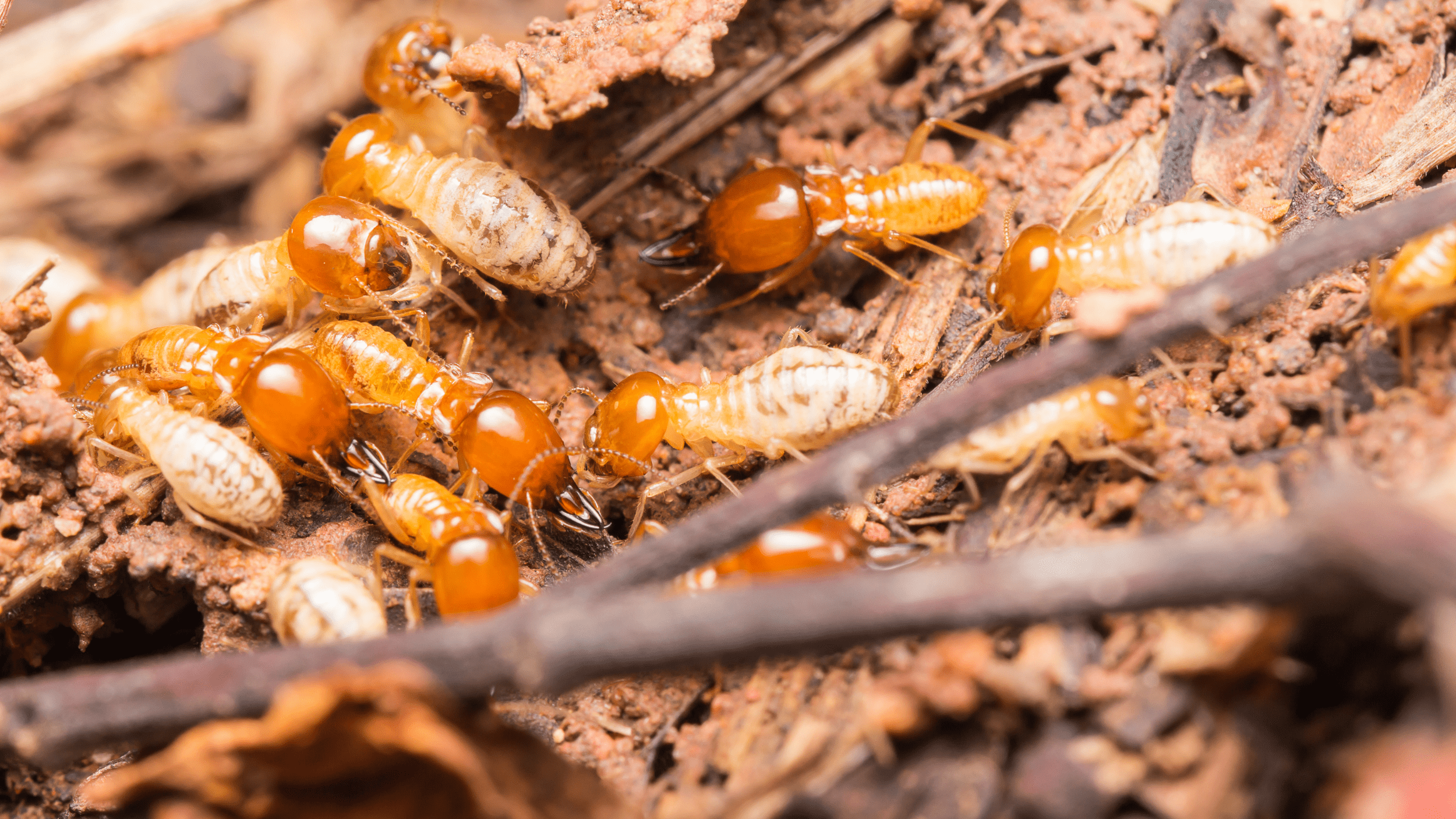
Termites
Drywood termites (Cryptoterme) – are a type of termite species known for infesting and damaging dry wood structures. Unlike subterranean termites that require contact with soil, drywood termites do not rely on moisture from the ground and can survive solely on the moisture present in the wood they infest. These termites are found in various regions around the world, particularly in warmer climates.
Drywood termites have a distinctive appearance and behavior. They are relatively small, measuring about 6 to 10 millimeters in length, and have a pale or light brown coloration. Winged reproductive termites, also known as alates, are darker and may have wings that extend beyond their body length. These alates are responsible for establishing new colonies.
As their name suggests, drywood termites infest dry wood structures. They do not require contact with soil and are capable of establishing colonies within wooden furniture, walls, floors, and other wooden objects. Unlike subterranean termites that build extensive underground tunnel systems, drywood termites create galleries and chambers within the wood they infest.
Drywood termites have a slow reproductive rate compared to other termite species. A mature colony typically consists of a few thousand individuals. The queen, located within the colony, is responsible for laying eggs, which hatch into nymphs that develop into workers, soldiers, or reproductives.
The feeding habits of drywood termites are unique. They extract nutrition from the wood they infest by consuming cellulose, which is the primary component of wood. These termites can cause significant damage to structures over time, as they excavate galleries and consume the wood, weakening its structural integrity.
Signs of a drywood termite infestation include the presence of small fecal pellets that are expelled from the termite galleries and may accumulate near infested areas. These pellets are often hexagonal in shape and can vary in color, depending on the type of wood being consumed. In severe infestations, there may be evidence of exit holes on the wood surface, as winged termites emerge to establish new colonies.
Controlling and managing drywood termite infestations can be challenging due to their ability to establish colonies within hidden areas of wood. Professional inspection and treatment by licensed pest control specialists are often necessary to effectively eliminate these termites. Treatment methods may include localized spot treatments, fumigation, or the use of termiticide foams or dusts applied directly into termite galleries.
Preventive measures can also help reduce the risk of drywood termite infestations. Regular inspections of wooden structures, including furniture and woodwork, can help identify early signs of infestation. Applying wood sealants or coatings can provide some protection against termite intrusion. Additionally, removing and replacing infested wood and addressing any moisture issues or wood-to-soil contact can help deter termite activity.
In summary, drywood termites are a species of termite that infest and damage dry wood structures. They do not require contact with soil and can establish colonies solely within wooden objects. Their slow reproductive rate and unique feeding habits make their control and eradication more challenging. Professional inspection and treatment, as well as preventive measures, are key to managing drywood termite infestations and protecting wooden structures.
Subterranean termites (Reticulitermes spp.) – are a highly destructive species of termites that are known for their ability to create extensive underground tunnel systems. They are one of the most common types of termites and can be found in various regions around the world, especially in areas with a warm and humid climate.
Subterranean termites have a social structure similar to other termite species. They live in colonies that consist of different castes, including workers, soldiers, and reproductives. The workers are the most numerous and are responsible for foraging, nest building, and caring for the young. Soldiers have larger heads and powerful mandibles, which they use to defend the colony against potential threats. The reproductives, also known as swarmers or alates, are responsible for establishing new colonies.
Unlike drywood termites, subterranean termites rely on contact with soil for moisture and survival. They build extensive tunnel systems called mud tubes, which provide them with a protected pathway between their nests and food sources. These mud tubes can often be seen extending from the ground up the foundation walls of buildings or other wooden structures.
Subterranean termites primarily feed on cellulose, which is found in wood and other plant materials. They can cause significant damage to wooden structures, including walls, floors, and furniture. These termites have specialized bacteria and protozoa in their digestive systems that help them break down cellulose into usable nutrients.
One of the most concerning aspects of subterranean termites is their ability to remain hidden and undetected for long periods. They typically infest structures from the ground up, entering through cracks in the foundation or gaps around plumbing and utility lines. By the time their presence becomes noticeable, significant damage may have already occurred.
Signs of a subterranean termite infestation include the presence of mud tubes, which serve as their shelter and moisture source. These tubes are usually brown in color and about the width of a pencil. Additionally, discarded termite wings near windowsills or light sources may indicate the presence of swarming termites.
Controlling subterranean termite infestations often requires professional intervention. Pest control specialists can perform thorough inspections to determine the extent of the infestation and recommend appropriate treatment methods. Common treatment options include soil treatments with liquid termiticides, baiting systems, and localized spot treatments.
Preventive measures are crucial for minimizing the risk of subterranean termite infestations. These include maintaining proper drainage around the foundation, ensuring there is no wood-to-soil contact, and sealing any cracks or openings that may provide entry points for termites. Regular inspections of wooden structures, including periodic checks for mud tubes and signs of termite activity, can also help detect infestations early.
In conclusion, subterranean termites are highly destructive termites that create extensive underground tunnel systems and rely on soil for moisture. They can cause significant damage to wooden structures and require professional treatment for effective control. Implementing preventive measures and conducting regular inspections are important for detecting and minimizing the risk of subterranean termite infestations.

